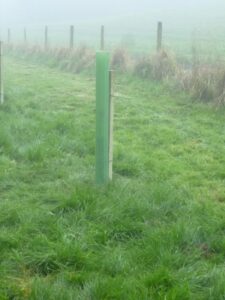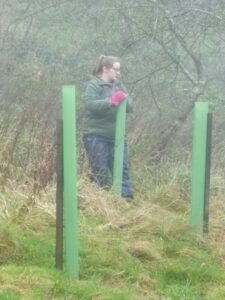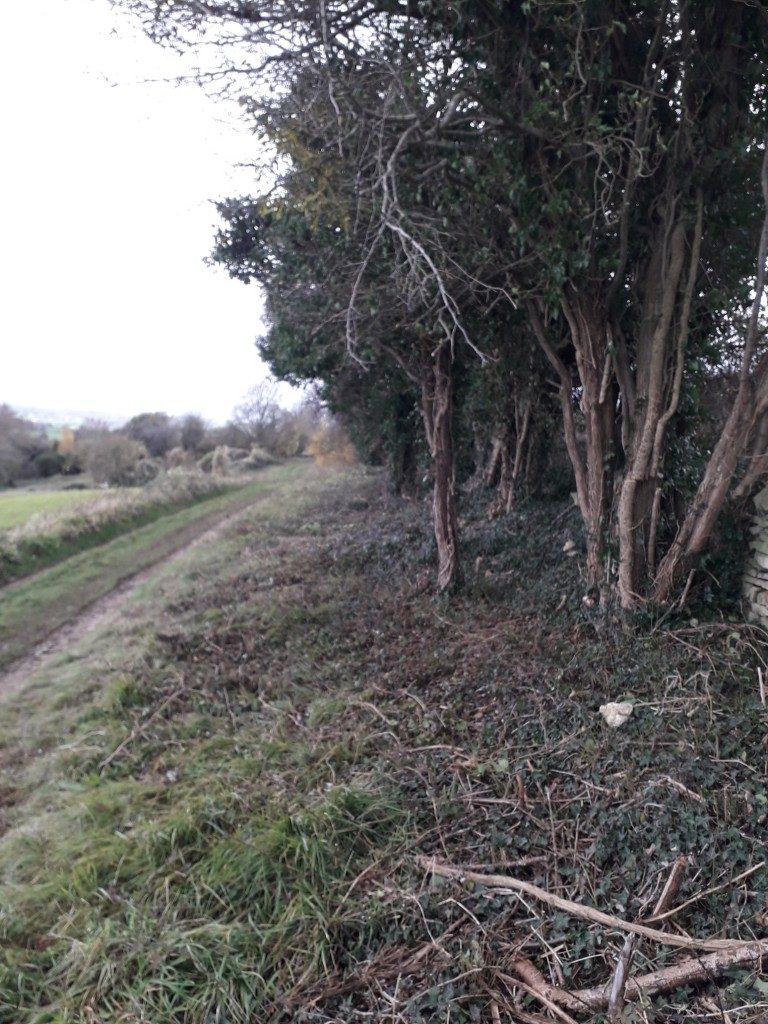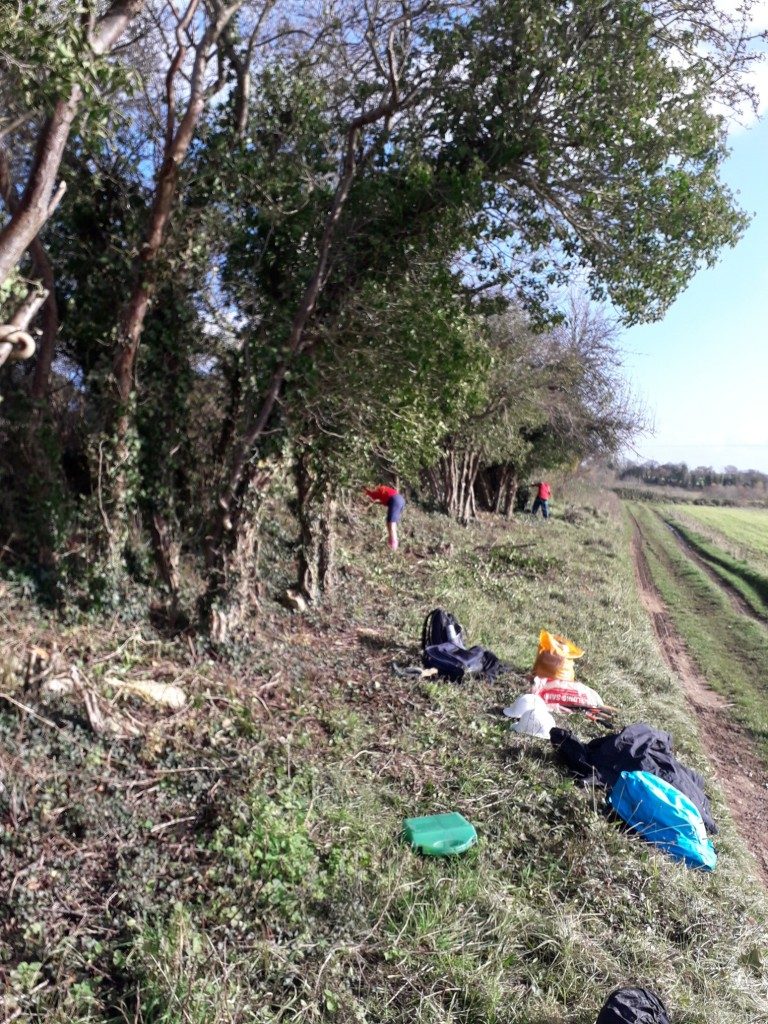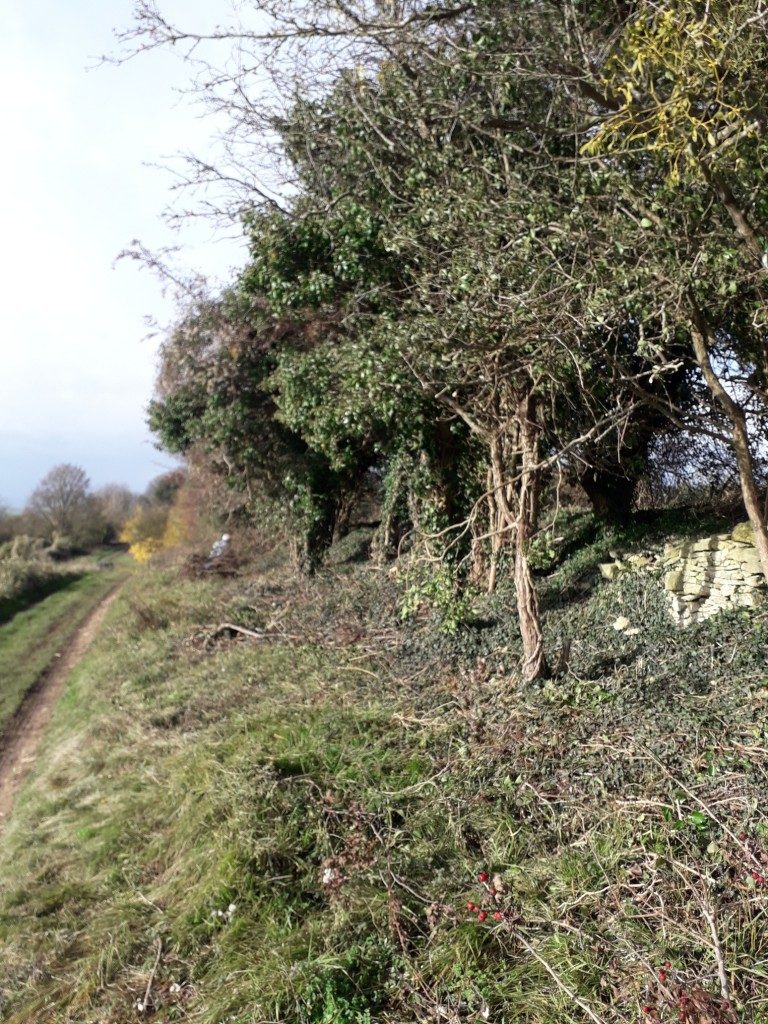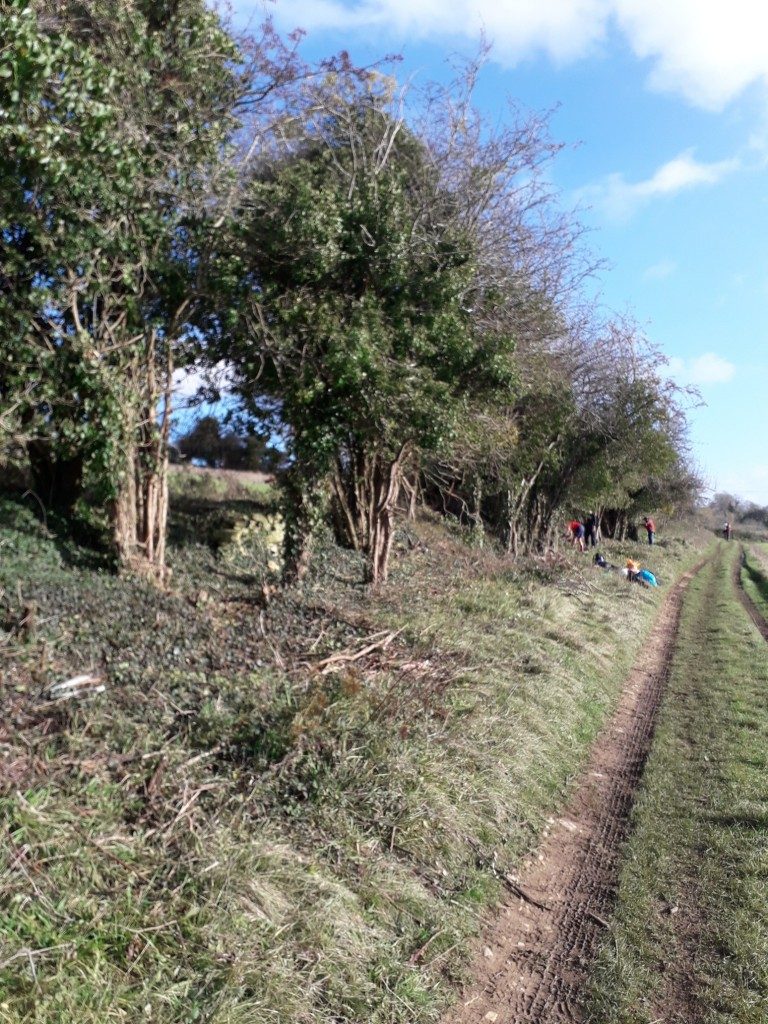GVCV TASK 04 July 2021 – Elmley Castle, Evesham
GVCV worked on 4 July 2021 at Lodge Farm, Elmley Castle, Evesham. We have previously worked on that site planting young trees including apple trees, and scrub bashing and clearing around a pond.
Two of us had also observed the installation of a set of leaky dams there with the idea that GVCV could replicate the process elsewhere. The technique used on the day however involved heavy mechanised plant manoeuvring substantial tree trunks. This was obviously well beyond the scope of GVCV. We did however decide that we could follow the principle but using smaller horizontals with intermediate vertical posts to hold them in place. The lighter construction is not an issue because the principle of leaky dams is to produce a slowing of the current by adding further dams in the ladder till the desired reduced flow is achieved.
Our specific task on that day was the removal of isolated clumps of blackthorn and bramble in a field of waist high grass. We were required only to stack the cut material for collection by others so really it sounded like a simple enough task.
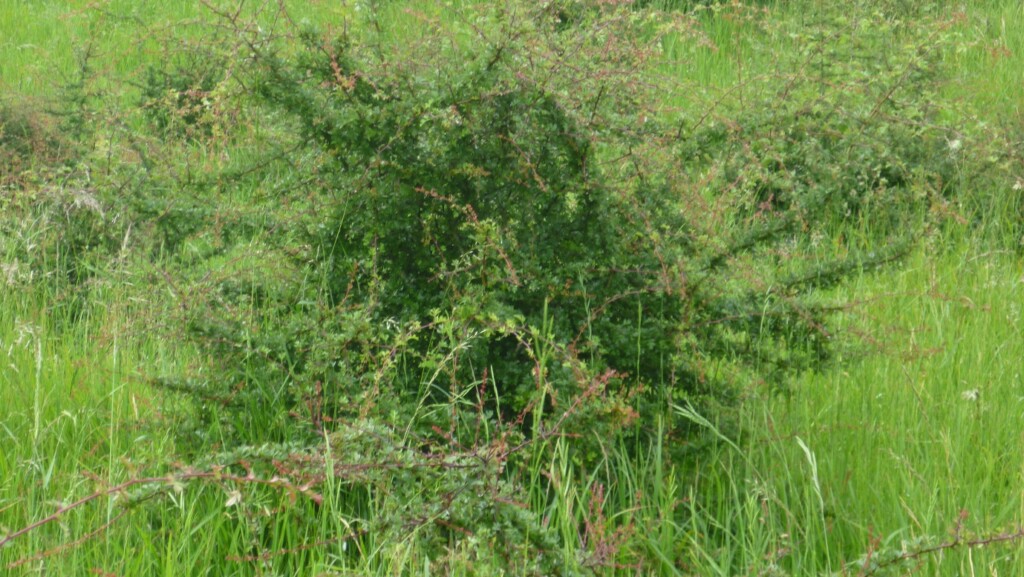
Typical Blackthorn clump
What elevated it from a simple task to a bit of a nightmare was the series of torrential downpours which soaked us to the skin, time and again. There was some minimal shelter in one corner of the field but getting there still dry was a feat beyond Linford Christie. And then there was the issue of summoning up the will to go back out into the open field.
I have to confess I called an early finish to the task and we handballed all the kit back down the hill
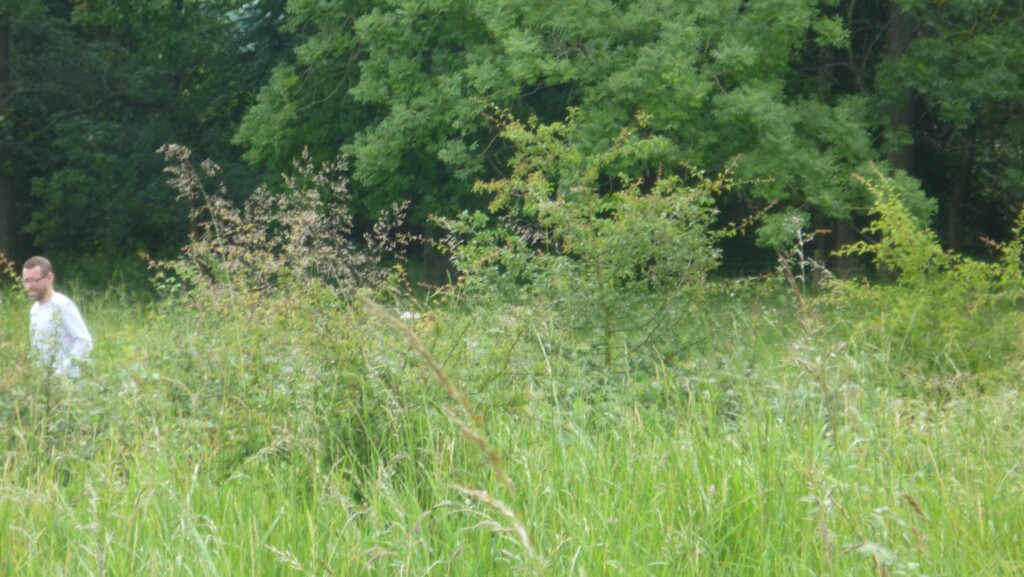
Waist high plus grass
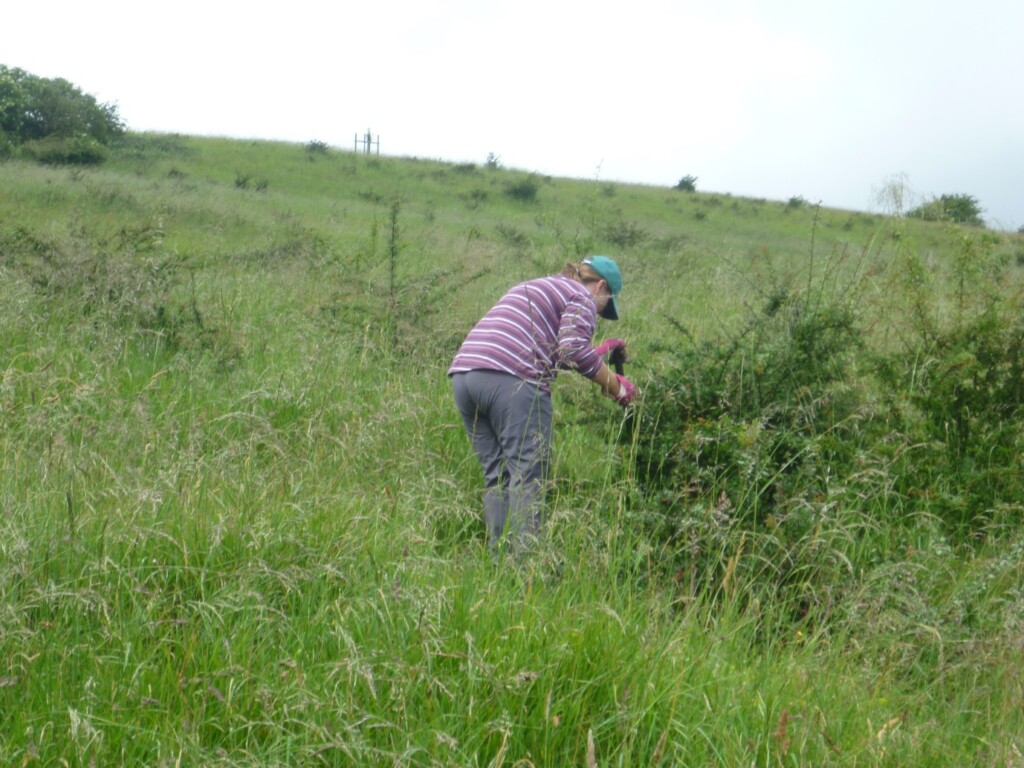
Concentrate on one clump at a time, then move on to the next one
We had great encouragement from the Gloucestershire FWAGSW rep and the farmer (plus his dog) who kindly transported us and our tools up the hill to the work site in his super all terrain pickup.
The compensation for all that aggravation was the panoramic views all around, us the song of a hundred skylarks overhead and a host of butterflies so thick it was difficult to walk without stepping on them.
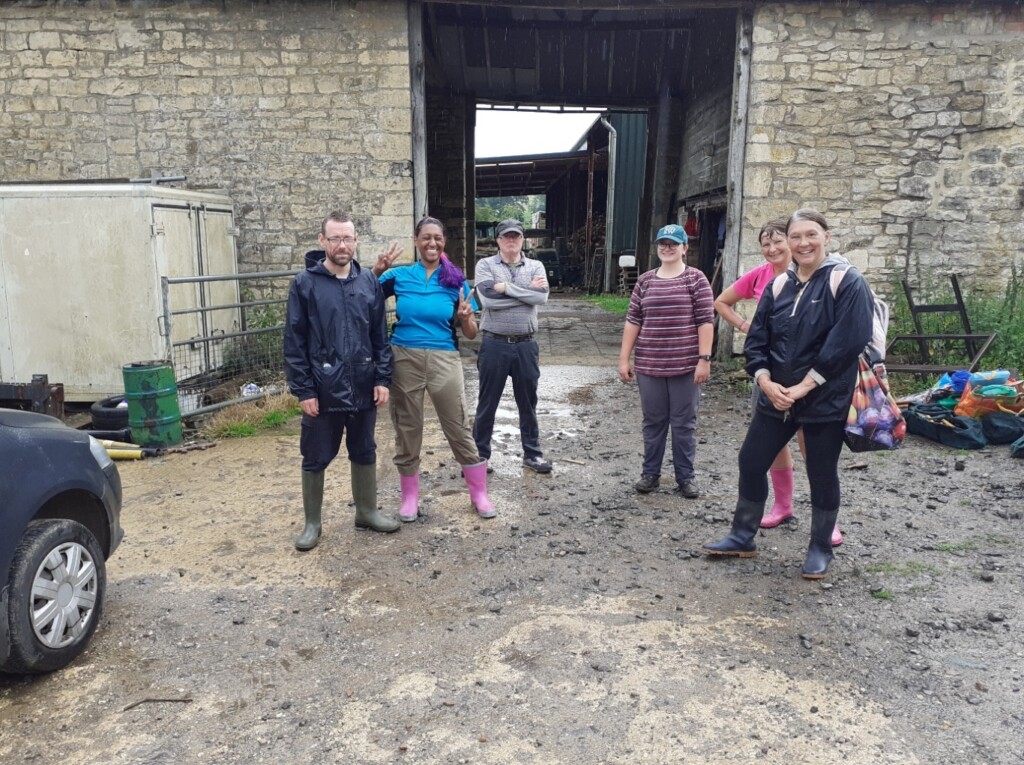
Tired and wet but unbowed and looking forward to the next task

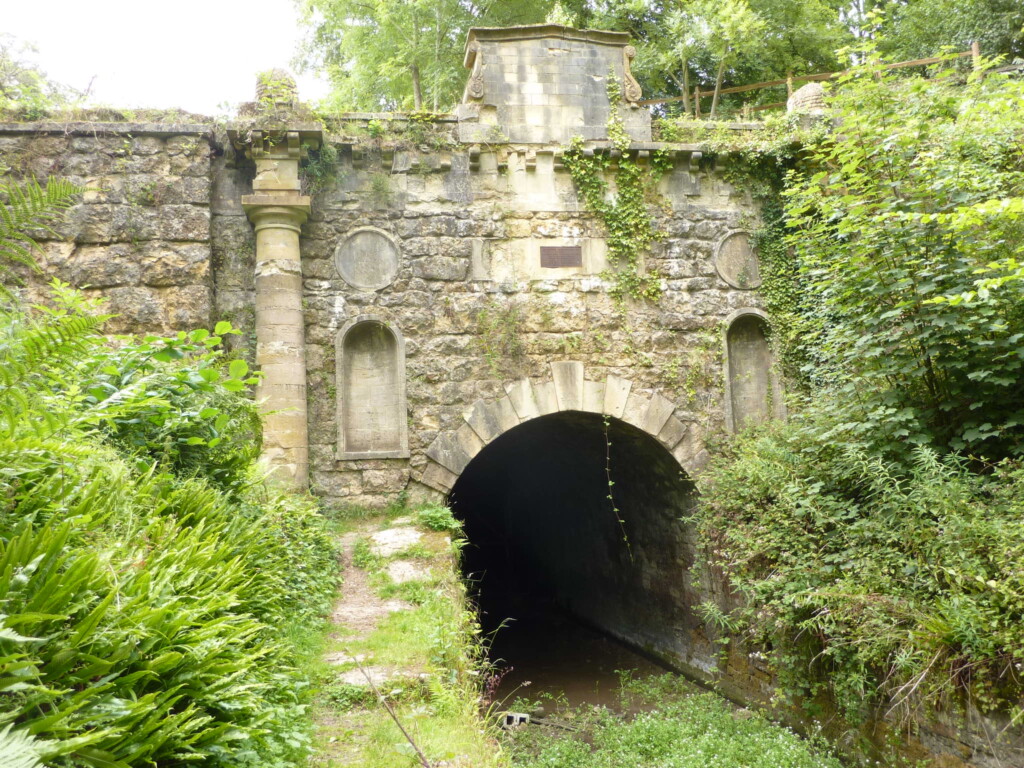
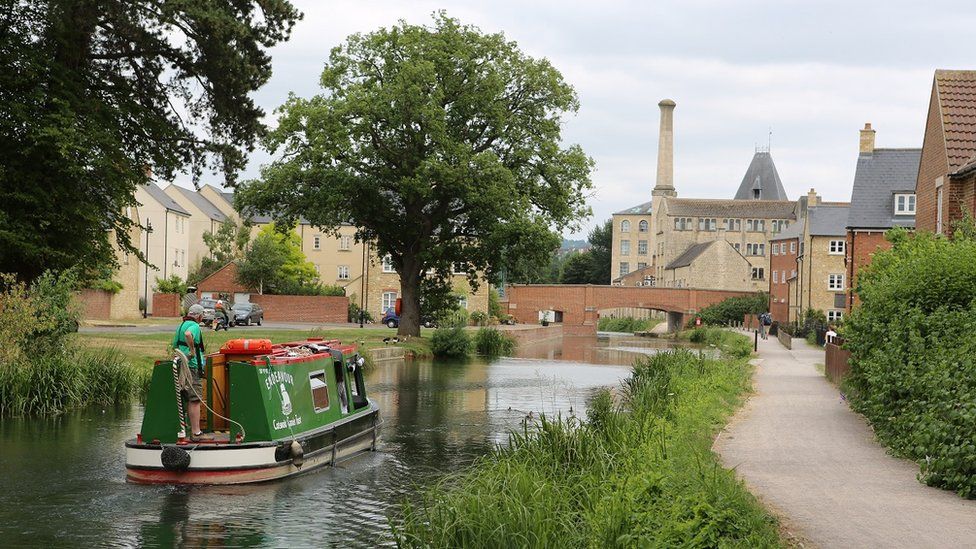


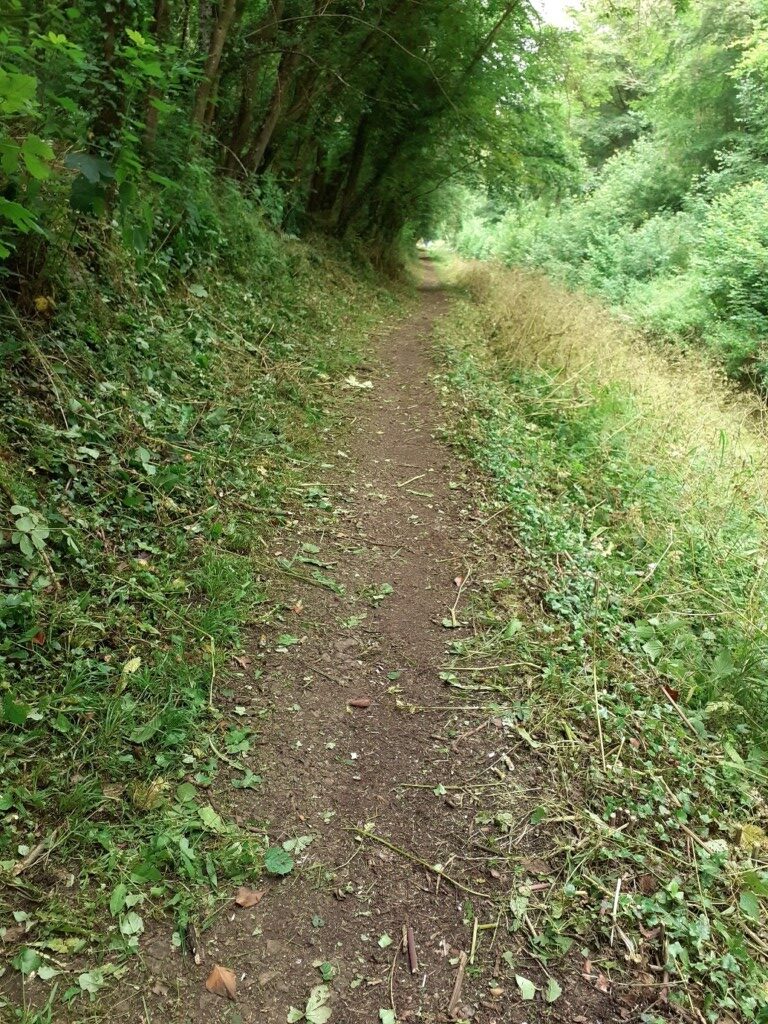
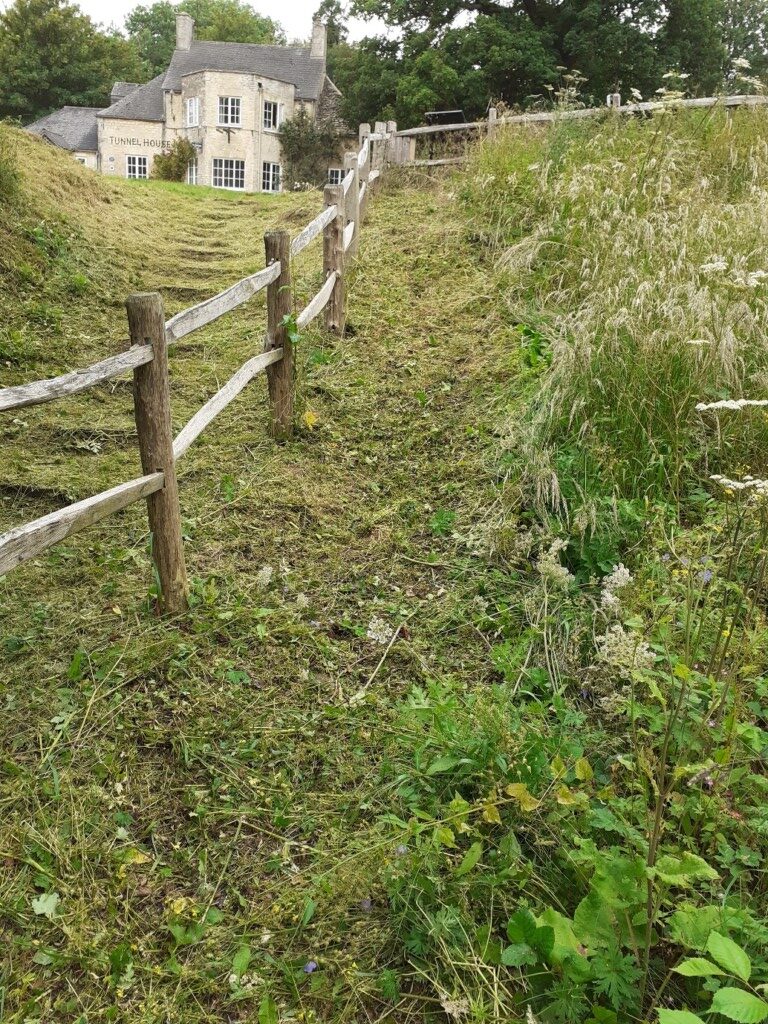
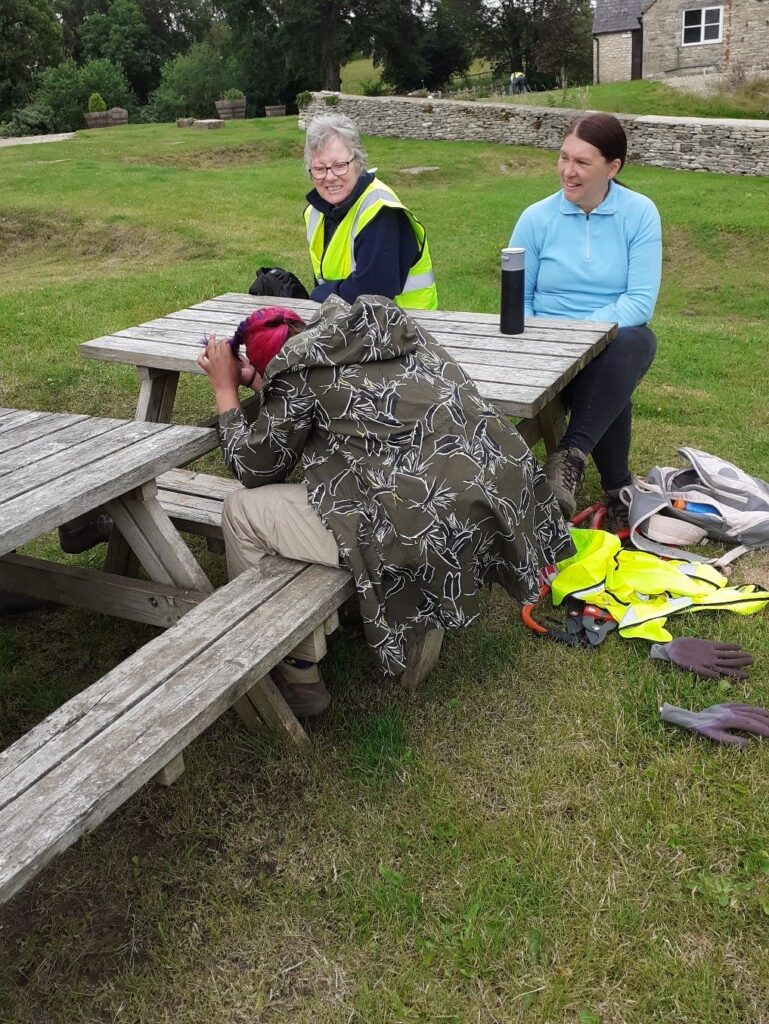

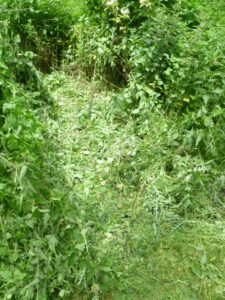
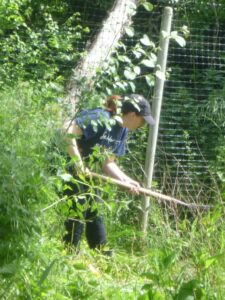







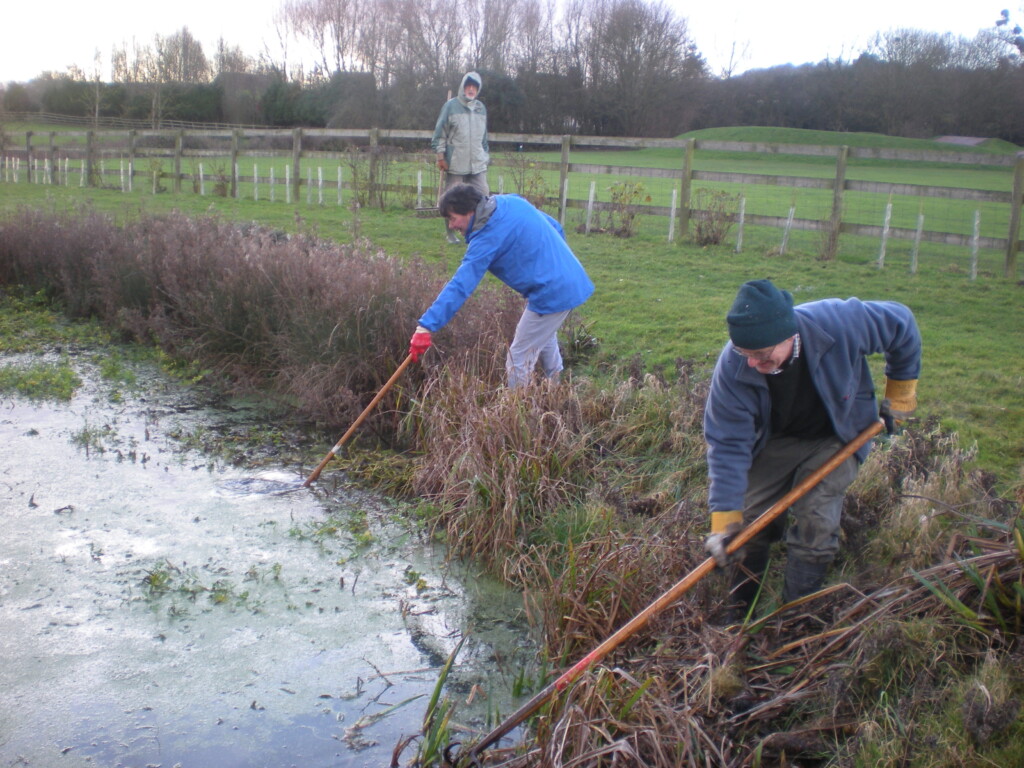
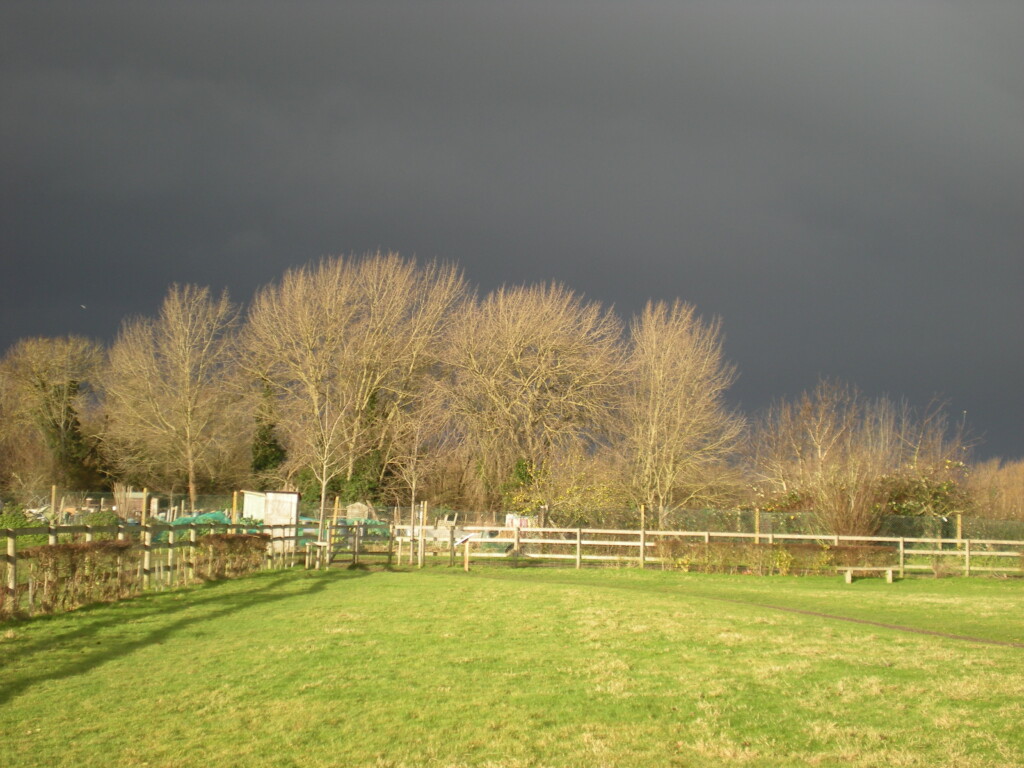
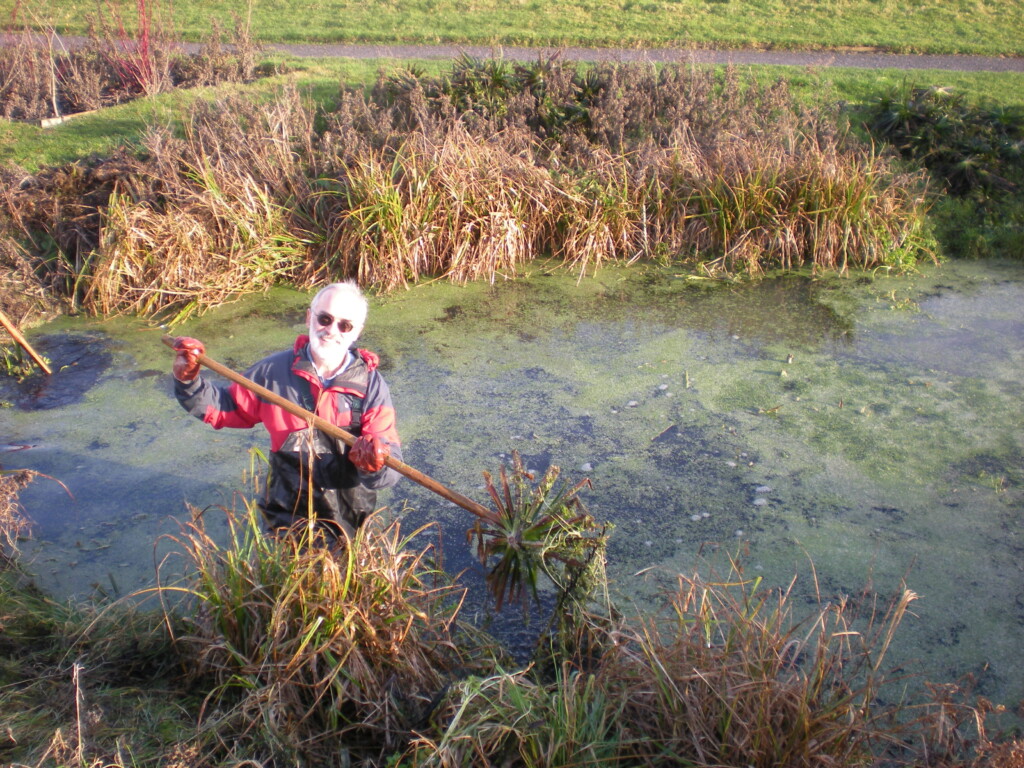
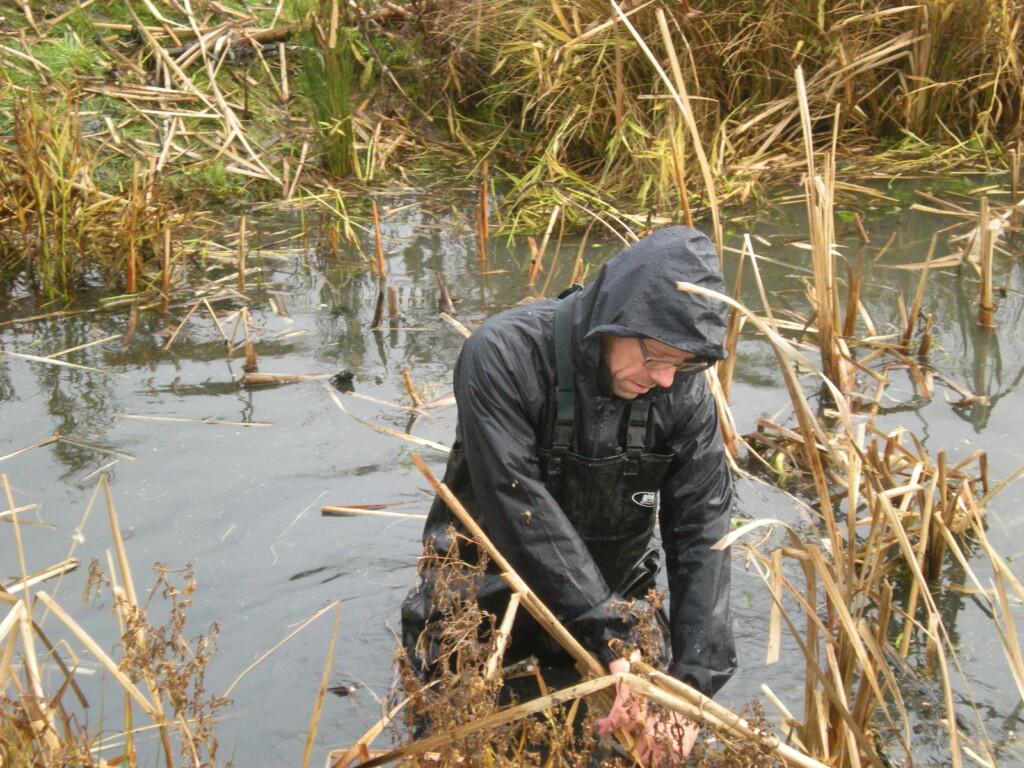
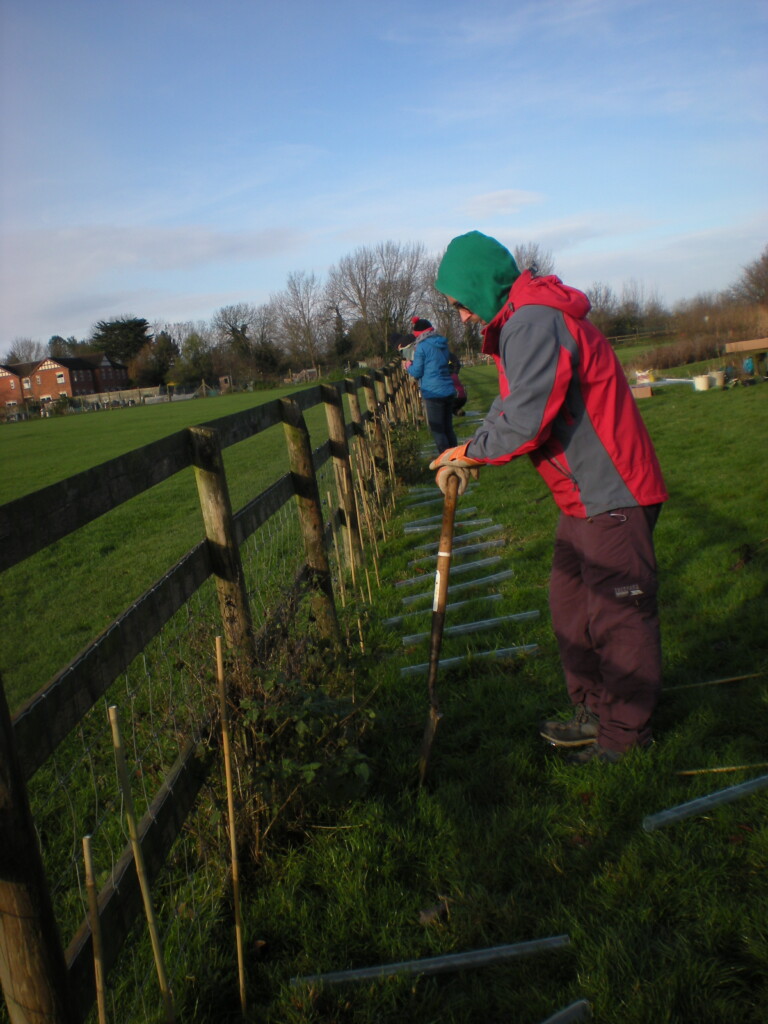
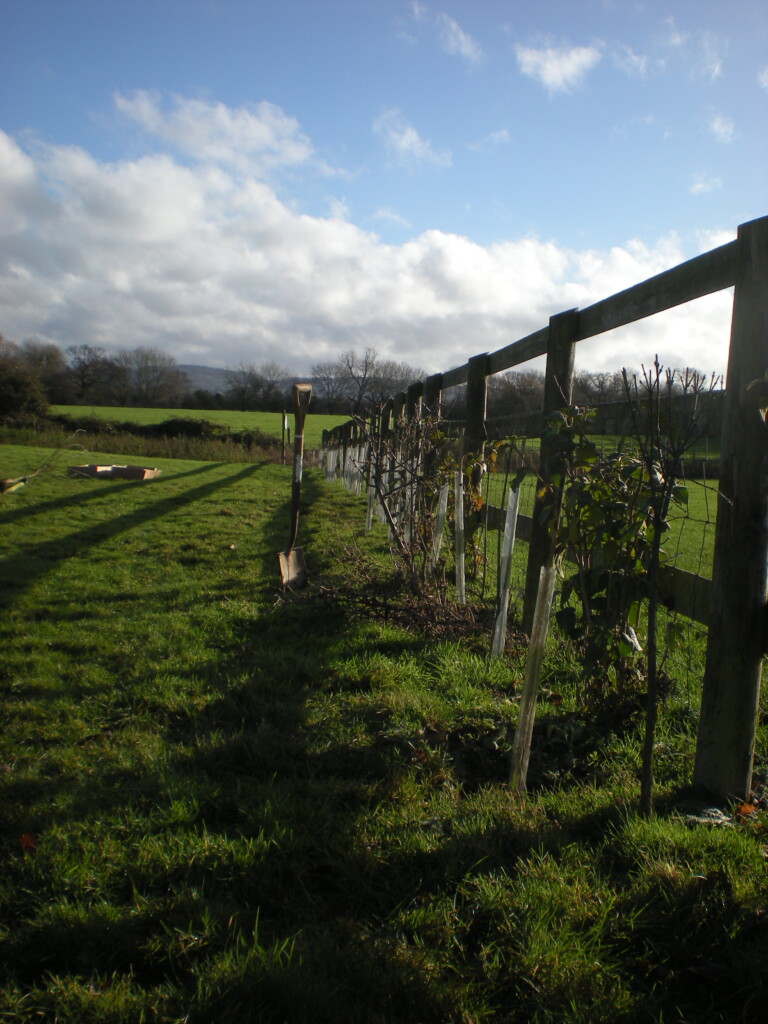
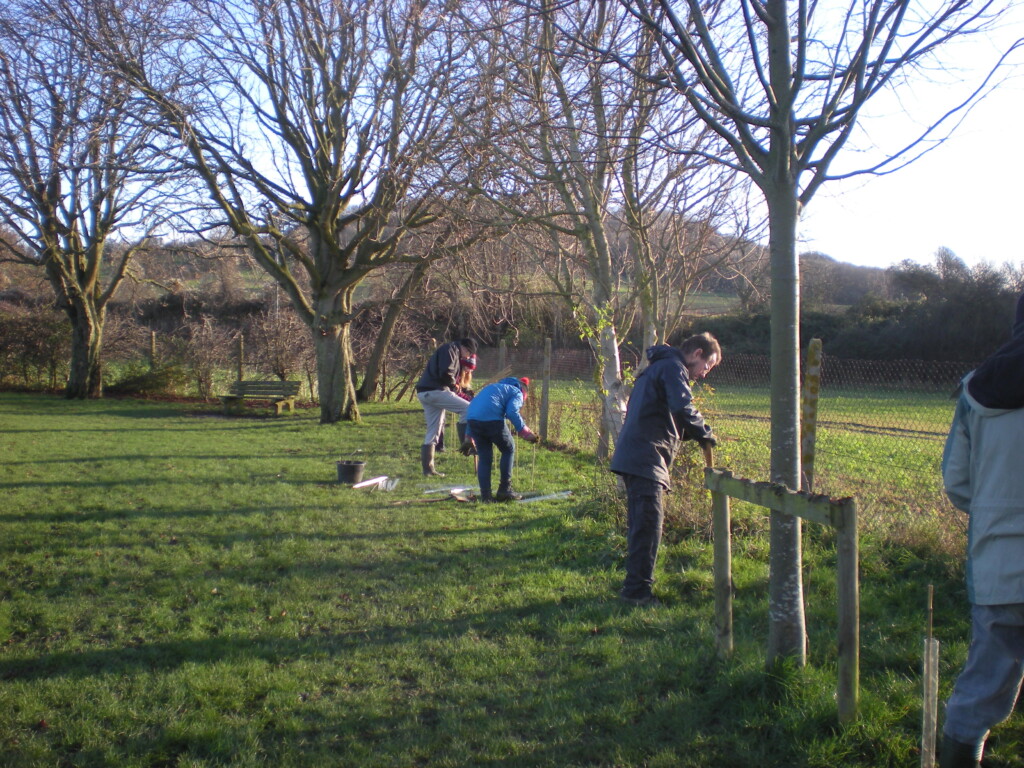
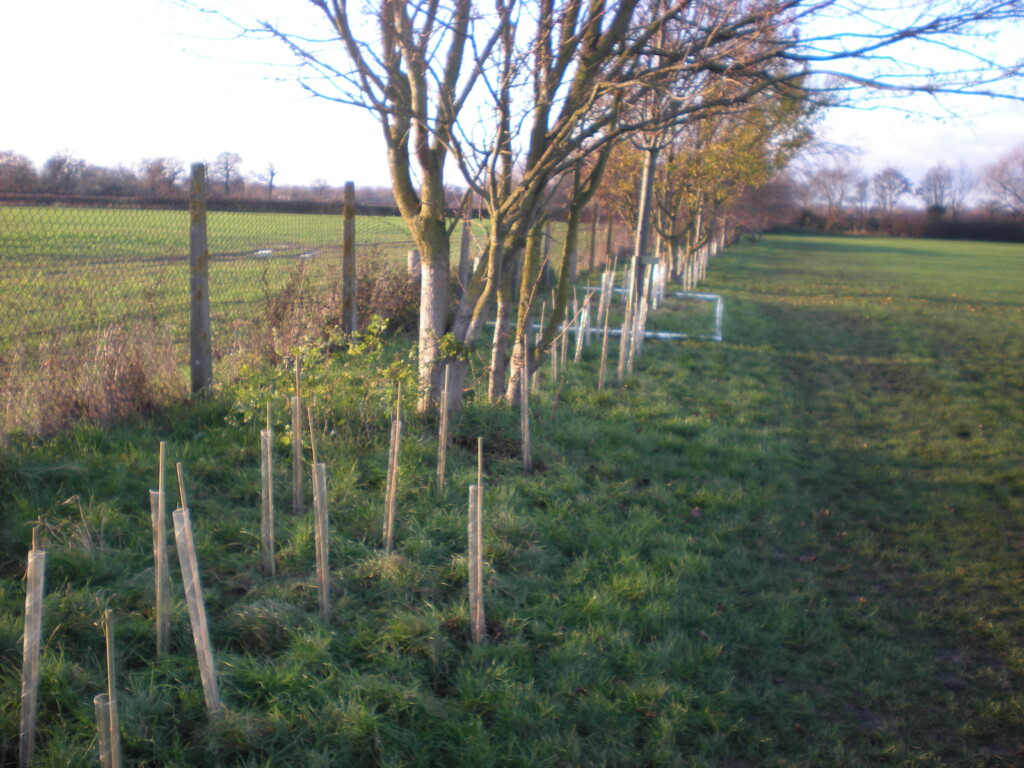
 The Farming & Wildlife Advisory Group South West (FWAGSW) is a registered charity representing the region’s farmers and landowners in the delivery of wildlife conservation. They are part funded by Natural England and work with partner conservation organizations including the Wildlife Trust. In Gloucestershire they are heavily involved in Water with Integrated Local Delivery (WILD) projects restoring ditches, streams and rivers to aid the currently failing ecology and fish populations.
The Farming & Wildlife Advisory Group South West (FWAGSW) is a registered charity representing the region’s farmers and landowners in the delivery of wildlife conservation. They are part funded by Natural England and work with partner conservation organizations including the Wildlife Trust. In Gloucestershire they are heavily involved in Water with Integrated Local Delivery (WILD) projects restoring ditches, streams and rivers to aid the currently failing ecology and fish populations.


